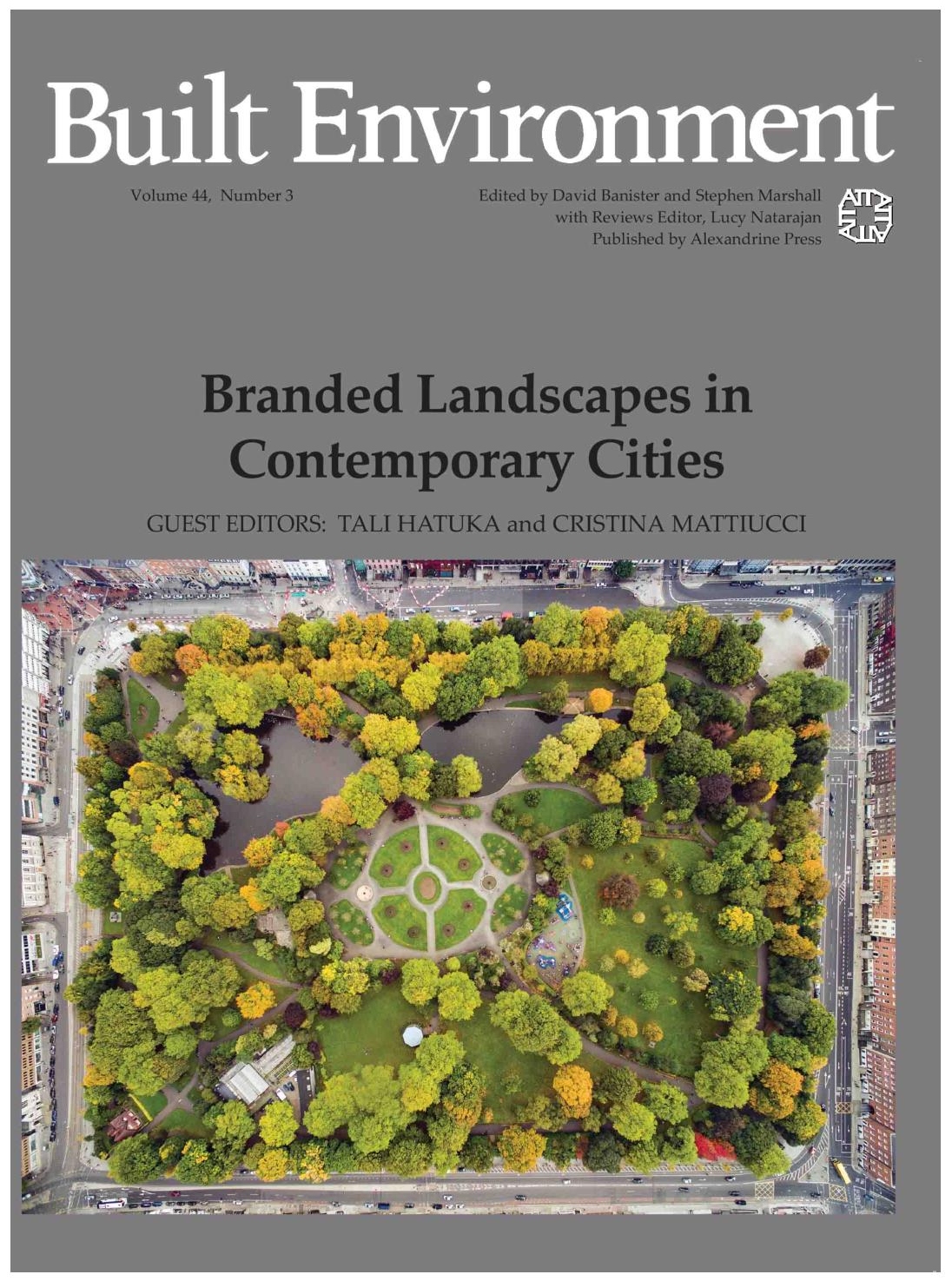October 2018
Guest Editor: Tali Hatuka and Cristina Mattiucci
Built Environment
Today, cities are redefining their relationships with the natural world, spurring a new dynamic between the built environment, man-made landscapes, and nature. Nature is no longer seen as the antithesis of the city and civilized life, or as something simply to support urban dwellers’ social life, but also as a means of fighting challenges such as climate change, urban health and well-being within the city. This approach to landscape and nature in cities has evolved as a response to the human–nature crisis and the need to limit urban development in open areas of ecological importance. In terms of planning, this approach called for the preparation of pre-development surveys, including a comprehensive land survey that relates to climate, geology, hydrology, flora and fauna as means to better planning the built environment. In addition, and in parallel, to the discussion on the conservation of land resources outside urban space, there was also recognition of the need to address the natural systems in cities (Scheer, 2011). This recognition led to investigation of flora and fauna in the city and examination of the city’s ecosystems, which in turn led to new design strategies viewing landscape as a key component in creating new hybrid ecosystems (Mossop, 2006). At the beginning of the twenty-first century this ecological emphasis in cities is associated with two prominent concepts: landscape urbanism (Waldheim, 2006) which emerged from architecture and planning, combining design with ecological approaches, and urban ecology (Mostafavi and Doherty, 2016; Steiner, 2011) whose roots are in ecological positivist studies.
These trends have resulted in viewing landscape and nature as a means/tool that can ‘solve’ some of the major challenges of contemporary urbanization also contributed to their presence in our daily life. Recycling, greening and rehabilitating nature in the city have not been merely theoretical-utopian ideas but rather translated into practice through policy documents, designated campaigns, and legal initiatives. This condition contributed to the centrality of landscape in our daily city life and also, as suggested by W.J.T. Mitchell (2002), contributed to the use of landscape as a verb. As he further argues, landscape is not just an object to be seen, or text to be read, but a process by which social and subjective identities are formed; as such, landscape is not merely signifying power relations; it is an instrument of cultural power, perhaps even an agent of power that is independent of human intentions (Ibid., p. 1).
Greening cities became a new religion and practice, with the involvement of governmental institutions, municipalities, and local/individuals. Everyone are involved.
- Governmental institutions mainly initiate generic policies, with a reference to broader principles stated by international institutions such as the UN, EU, and so on. As such they tend to be a-contextual, supporting initiatives that increase ecological as well economic value of sites. In addition, governmental policies play a significant role in building a consensus around the concept of sustainability and resiliency, so making a city more attractive for citizens and for foreign and local investment.
- Municipalities focus on the development of landscape projects, conceived and programmed for a specific site, as well as cities’ developing infrastructure that would support recycling and greening. Though they might be adjusted to a particular city or culture, the development of projects and infrastructure are based on similar rational and design strategies. Especially in the last twenty years, landscape design projects have taken on a kind of homogeneous approach in the quest of balancing urbanization and densification.
- Local/individual practices represent an important level in the absorption of the ecological turn. It is the local initiatives and practices of individuals that contribute to the spread of green in contemporary city; individuals and collective subjectivities (e.g. associations, cooperatives, movements) take care of the green in their urban environment, from the scale of the individual urban gardening to the communal public green. Such practices are usually very encouraged by institutions and local governments, because they also work as a means to enhancing a sense of community, belonging and urban health, beyond increasing the landscape materiality of the city.
In exploring further these landscape initiatives, it is important to understand the actual instruments that contribute to the development of landscape and nature in contemporary cities. What are these instruments and what has been achieved by them? To what extent have we commodified landscapes and nature? How has this commodification influenced life in the city, including urban processes? Where do efforts to reclaim space within the city for nature fit in the power dynamics within cities?
The papers in this issue present three perspectives on the instrumentalization of landscape and nature in cities: the paradigmatic, the urban and regional, and the local/personal. Each perspective is addressed both from a discursive analysis and from an empirical-contextual point of view, offering diverse viewpoints on the contribution and realization of these instruments.
Download:

